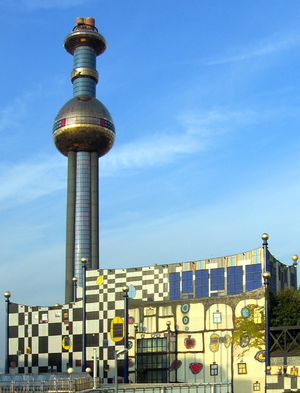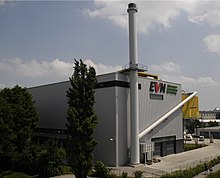
Back تدفئة مناطقية Arabic Цеплазабеспячэнне Byelorussian Цеплазабясьпячэньне BE-X-OLD Топлофикация Bulgarian Dálkové vytápění Czech Ăшăпа тивĕçтерни CV Fjernvarme Danish Fernwärme German Τηλεθέρμανση Greek Calefacción urbana Spanish





District heating (also known as heat networks) is a system for distributing heat generated in a centralized location through a system of insulated pipes for residential and commercial heating requirements such as space heating and water heating. The heat is often obtained from a cogeneration plant burning fossil fuels or biomass, but heat-only boiler stations, geothermal heating, heat pumps and central solar heating are also used, as well as heat waste from factories and nuclear power electricity generation. District heating plants can provide higher efficiencies and better pollution control than localized boilers. According to some research, district heating with combined heat and power (CHPDH) is the cheapest method of cutting carbon emissions, and has one of the lowest carbon footprints of all fossil generation plants.[1]
District heating is ranked number 27 in Project Drawdown's 100 solutions to global warming.[2][3]
- ^ "Carbon footprints of various sources of heat – CHPDH comes out lowest". Claverton Group. Retrieved 2011-09-25.
- ^ Haas, Arlene (April 12, 2018). "The Overlooked Benefits of District Energy Systems". Burnham Nationwide. Retrieved 2019-09-28.
- ^ "District Heating". Drawdown. 2017-02-07. Archived from the original on 2019-05-02. Retrieved 2019-09-28.
© MMXXIII Rich X Search. We shall prevail. All rights reserved. Rich X Search